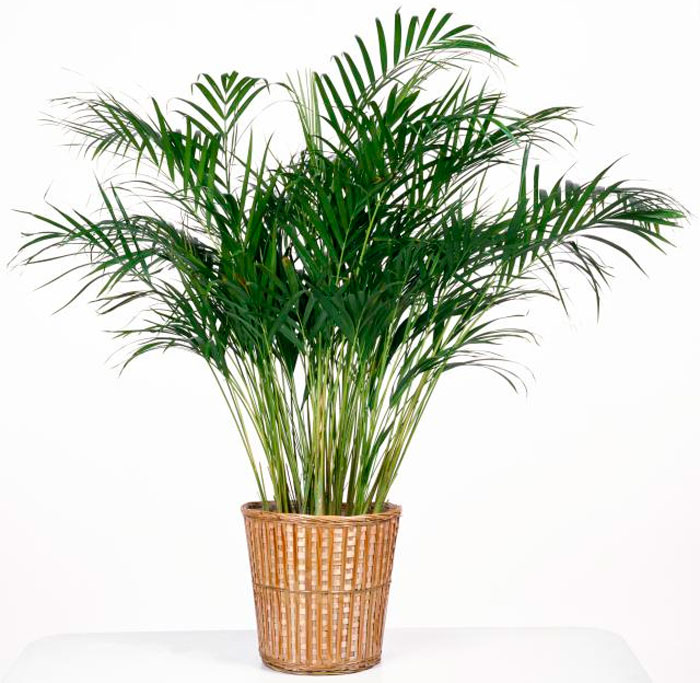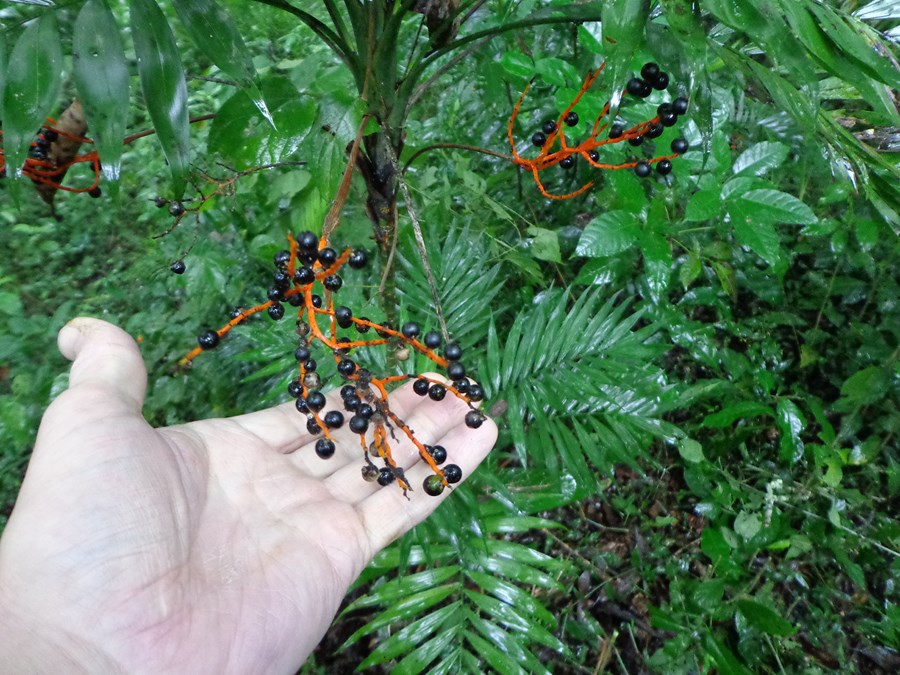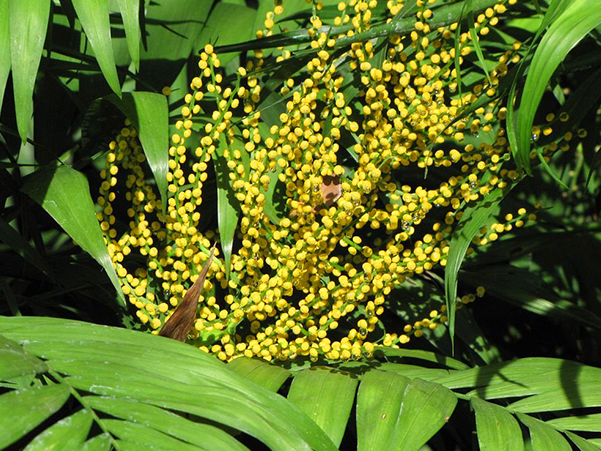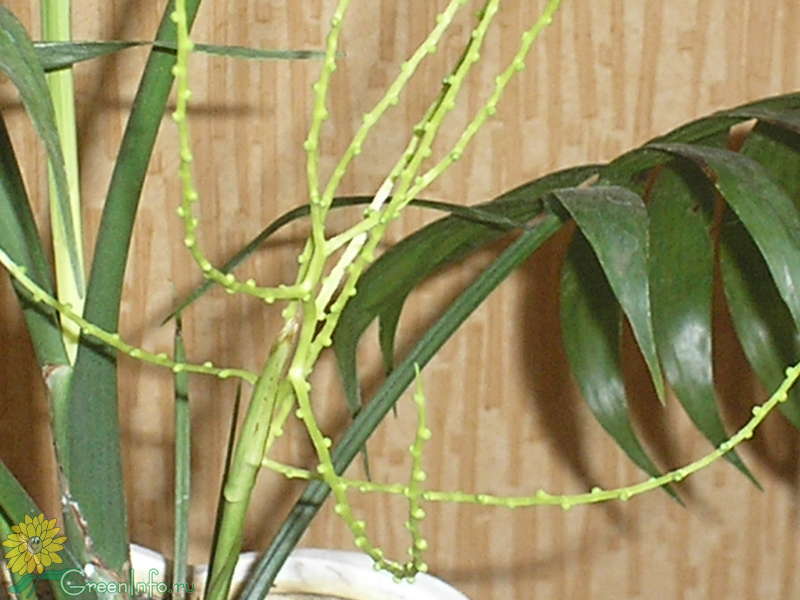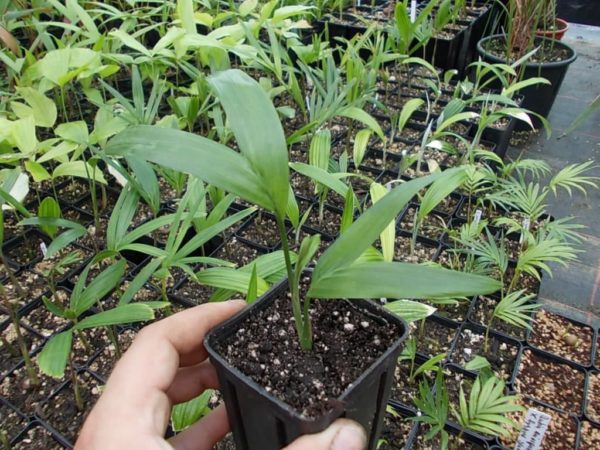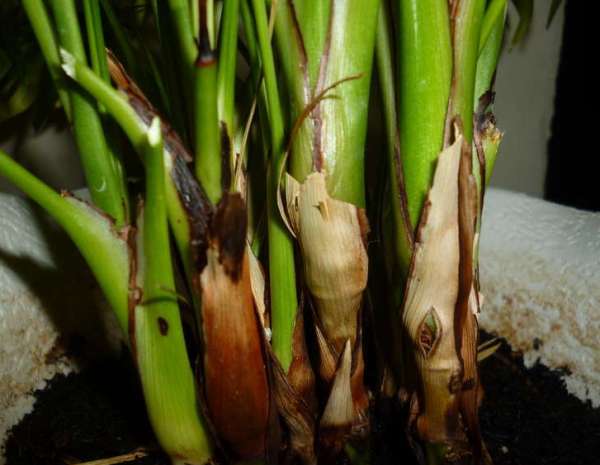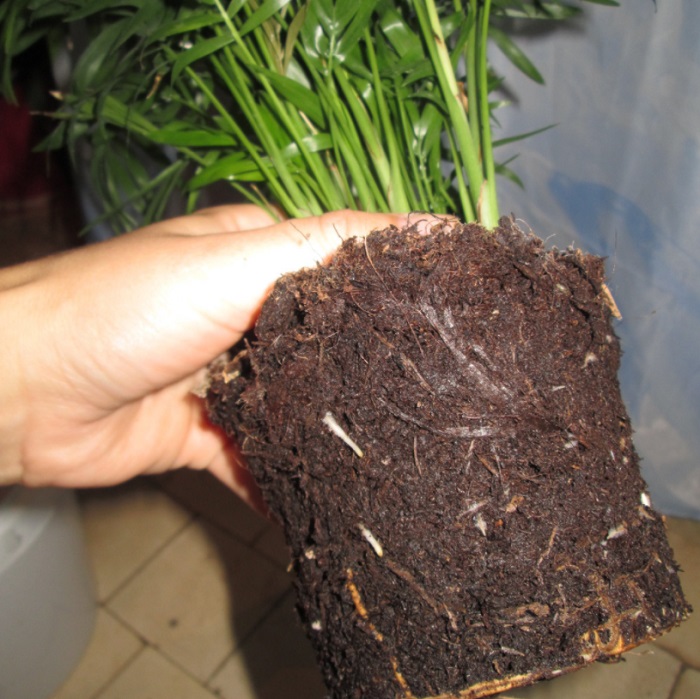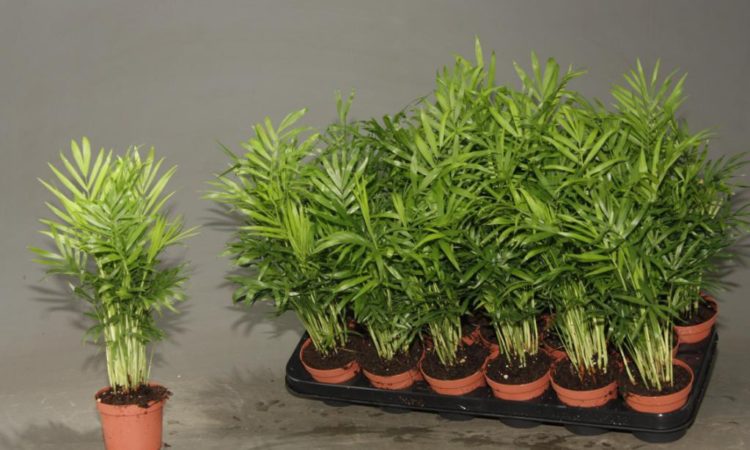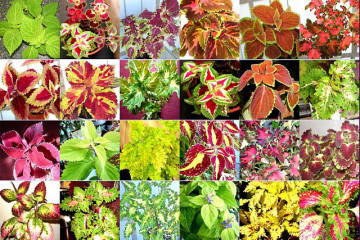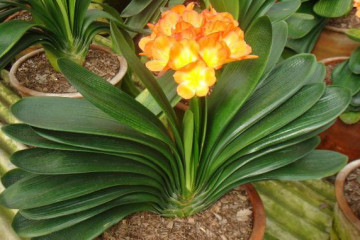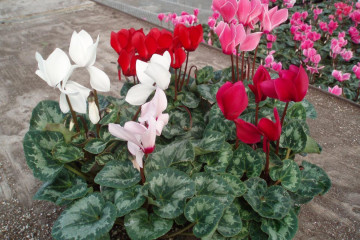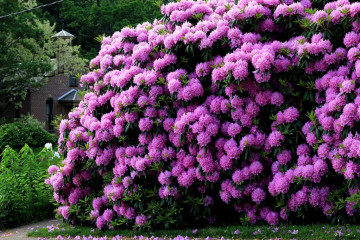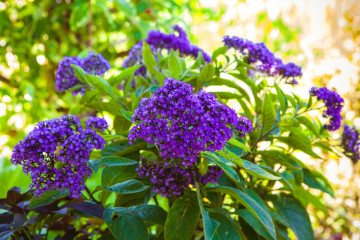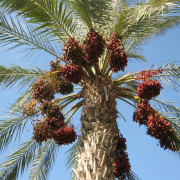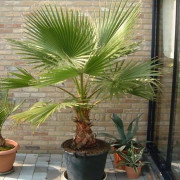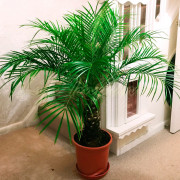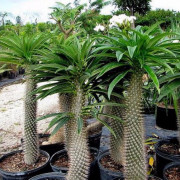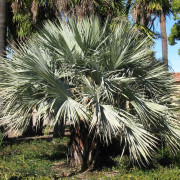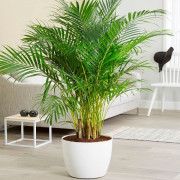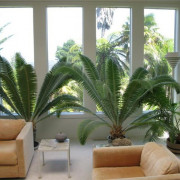Hamedorea elegans flower - growing and care
Content:
Palm Chamedorea Elegance (Chamaedorea elegance) also has a second name - Chamedorea Graceful. Grows naturally in the forests of Mexico. Natural conditions suggest high humidity. But domestic lovers of exotic indoor plants will be able to grow this palm at home.
What hamedorea elegans looks like
The first mention of the plant came from Central and South America. In ancient times, it was believed that chamedorea was the best plant for meditation and self-knowledge. It was also used for food.
Hamedorea elegans belongs to the Palm family. Outwardly, the flower resembles a shrub, with straight thin stems. Plant height varies from 1.5 to 2 meters. The upper part of the stems are panicles, consisting of several long-petiolate leaves with a beautiful green color.
Peduncles in this species grow from leaf rosettes. The inflorescences consist of small balls-flowers. Black fruits are formed immediately after the flowers fall, each contains a seed.
Other common varieties
It is not difficult to grow chamedorea at home; first of all, you need to decide on the type of flower. Experienced florists advise the following proven types:
- Hamedorea is high. If properly cared for, the bush can grow up to 2 meters. Leaves grow vertically, abundant flowering. The branches are strewn with bright orange flowers.
- Arenberg. The variety is represented by a single trunk, on which wide leaves are located.
- Ernest August. The most graceful representative of this culture. The leaves on the long branches look like a green hat.
Healing properties
The plant has beneficial qualities and medicinal properties. Hamedorea humidifies and purifies indoor air. Absolutely safe for any pets.
Features of caring for chamedorea elegans at home
Caring for a plant involves following simple rules. Compliance with the temperature regime, lighting standards, watering rules will lead to an excellent result and a healthy plant.
Temperature
In the summer, chamedorea elegans is demanding on the temperature regime. It is necessary to maintain the temperature in the room +20 .. + 25 degrees.
In winter, the flower is rearranged in a cool place, the temperature in which should not exceed +15 degrees.
Lighting
The palm tree reacts calmly to any lighting. Feels good both in the shade and in the most illuminated conditions.
It is not recommended to place the flower in direct sunlight - burns may appear on the leaves.
For uniform formation of the bush, it is necessary from time to time to turn the plant towards the light.
Watering
The flower requires abundant and systematic watering. At elevated temperatures, the amount of water introduced into the soil should increase.
If the substrate dries up, the death of the plant is inevitable.
Spraying
Experts recommend sprinkling at least 2 times a day. You can spray the flower with an ordinary spray bottle, or you can use a shower head.
Spraying is carried out with as warm water as possible.
Humidity
High humidity is the best habitat for chamedorea.
Caring for Chamedorea Graceful involves placing a flower in close proximity to a humidifier or an artificial reservoir.
Priming
For planting, it is recommended to use a special soil purchased from the store. It should be marked "for palm".
When preparing yourself, you must take:
- sod land (3 parts);
- deciduous soil (1 part);
- river coarse sand (1 part);
- peat (part 1).
When charcoal is added to the soil, its nutritional properties are improved.
For the palm, drainage must be done at the bottom of the pot. For these purposes, expanded clay, gravel, broken brick are suitable.
Top dressing
Fertilization is an important aspect of the healthy development of any plant. From spring to autumn, feeding is carried out every 2 weeks. A liquid fertilizer created specifically for the palm tree has proven itself excellent. Some use foliar fertilizer.
Gardeners have proven the undeniable benefits of nitrogen for indoor plants.
When and how it blooms
The flowering process of this culture begins only in an adult plant, for 3-4 years. The height of the chamedorea will already reach 30-40 cm.
The flowers resemble mimosa and have no decorative value. The number of flowers varies from variety to variety. Outwardly, everything resembles a branched panicle located on the stem.
The flowers are small, round, most often painted yellow. Other varieties of hamedorea have flowers of a red, orange hue.
Palm trees can start blooming at any time of the year. At this moment, several panicles are formed.
Changes in care during flowering
During the period of active flowering, it is necessary to create conditions for the comfortable growth of Chamedorea Elegance:
- Temperature +16 .. + 20 degrees.
- Abundant watering.
- High humidity.
- Carrying out the plant to the street.
The dormant period begins a couple of weeks after the end of flowering. It should be accompanied by a drop in temperature - +12 .. + 15 degrees. It is important not to allow lower temperatures, this will lead to illness, and maybe even to the death of the flower.
Pruning
For this species, it is not recommended to resort to leaf pruning at all. Hamedorea Graceful has one point of growth. When pruning, the growth of the flower stops and after a short period it will simply die.
How chamedorea elegans reproduces
Flower propagation is carried out in the most standard ways: using seeds, cuttings, air layers.
- Germinating seeds
The seed method involves the use of a container in which greenhouse conditions can be created. Seeds are sown superficially into a pre-prepared nutrient substrate. The first seedlings will appear in 1-1.5 months.
- Rooting cuttings
Propagation by cuttings is the separation of root suckers from an adult plant. Strong roots on the processes are the first indicator for transplantation. The carefully separated plant is transplanted into a pre-prepared pot.
- Air layering
The fastest way is propagation by air layers.
- Other options
If an adult plant has grown too much, then transplanting by dividing the bush is the only way out. Hamedorea is taken out of the pot along with an earthen lump. The root system and leaves are divided into the required number of divisions. Such a plant should grow in the same conditions as an adult representative.
Transfer
Plants under 3 years old must be transplanted once a year.
An adult bush should be transplanted once every 3 years and only after the root system has outgrown the existing capacity.
Possible growing problems and diseases
Most often, plants are subject to disease due to non-compliance with the rules of care.
- Drops buds and leaves
Falling flowers and leaves occurs due to a sharp change in room temperature. A decrease in temperature is detrimental to this species.
- Leaves turn pale
The appearance of light spots on the leaf plates is caused by direct sunlight on the flower. Hamedorea is unpretentious to the habitat, but diffused light is more useful for her.
- The tips of the leaves dry
The drying process of palm leaves begins at the slightest decrease in air humidity. This is due to the fact that chamedorea is an extremely moisture-loving plant.
- The lower leaves fall
Most often, the fall of the lower leaves is a natural process. Also, shedding of foliage can be caused by temperature fluctuations.
- Pests
There are three types of pests that can attack this species: spider mites, scale beetles, thrips.
The treatment is one for all. If insects are found, it is urgent to treat the entire plant and land with Actellik or any other insecticide.
- Other problems
Rotting of the root system is caused by a violation of the norms of watering the plant. The first signs are characteristic spots on the stems and an unpleasant odor emanating from the soil.
The yellowing of the entire leaf plate is most often caused by chlorosis. The disease appears with an increased level of calcium in the soil. Transplanting into a universal substrate will help save the flower from death.
Signs and superstitions
Folk omens advise every housewife to purchase or grow hamedorea. Thanks to her presence in the house, the fate of a person will noticeably change:
- good luck in business;
- the microclimate in the house will become peaceful and calm;
- the scent of this flower scares away evil spirits and protects the house.
There is another superstition that literally haunts this species. If you bring an adult plant into the house in your hands, troubles and troubles come along with it.
Believe it or not in omens is everyone's business. The main thing is that the flower will decorate absolutely any room and will delight with its appearance for many years.
Home care for hamedorea elegans is about a drop of attention and patience. If you follow the recommendations above, you can grow a wonderful houseplant that fits perfectly into almost any interior.
